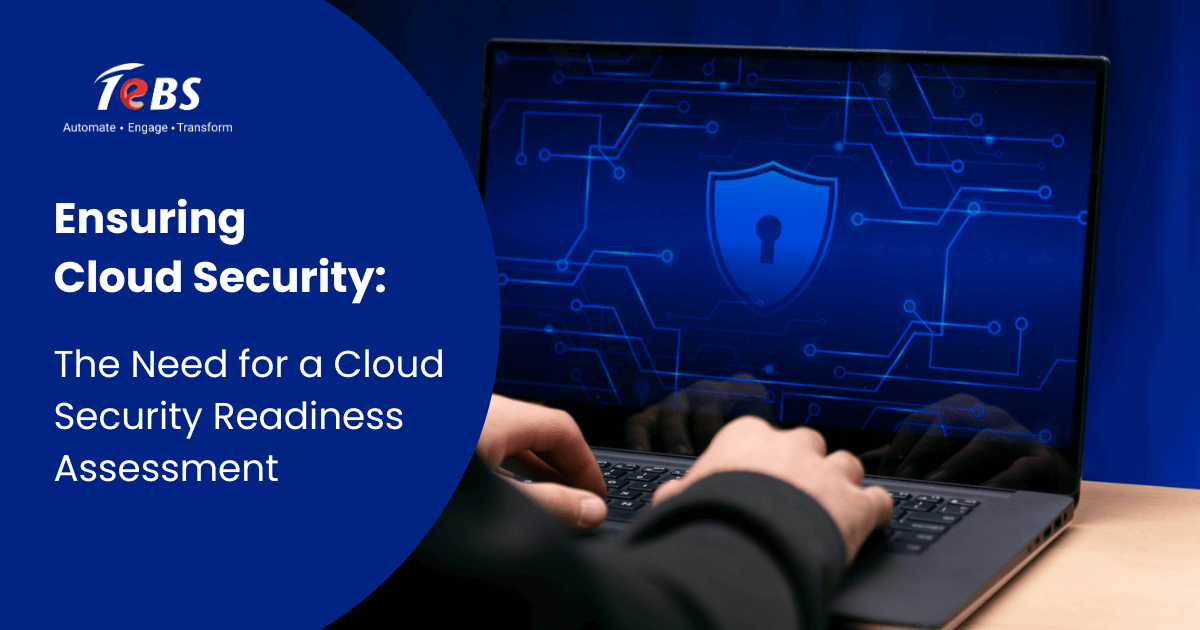In today’s rapidly evolving digital landscape, cloud computing has emerged as a pivotal technology for organizations looking to enhance their operational efficiency, scalability, and cost-effectiveness. However, the migration to cloud services brings with it a host of information security risks, legal and compliance challenges that demand meticulous planning and proactive measures. One essential step in this process is conducting a Cloud Security Readiness Assessment (CSRA). In this blog, we’ll delve into why a CSRA is crucial, the information security risks it addresses, the legal and compliance challenges it helps mitigate, and strategies for planning a secure cloud implementation.
The Need for Cloud Security Readiness Assessment
A CSRA is an indispensable prelude to any cloud migration strategy. It serves as a comprehensive evaluation of an organization’s existing security posture, its ability to protect sensitive data, and its readiness to transition to the cloud. Here’s why a CSRA is necessary:
Identifying Vulnerabilities: A CSRA helps pinpoint vulnerabilities and weaknesses in an organization’s current security infrastructure. It sheds light on potential gaps that malicious actors could exploit during the migration process.
Risk Assessment: By assessing potential risks, a CSRA enables organizations to prioritize security measures and allocate resources accordingly. It helps in building a robust risk management strategy.
Regulatory Compliance: Various industries are subject to stringent regulations governing data protection and privacy. A CSRA aids in understanding how migrating to the cloud could impact compliance and what steps are necessary to maintain adherence.
Cost-Efficient Planning: Investing in a CSRA upfront can save significant costs that might otherwise arise due to security breaches, data loss, or regulatory non-compliance.
A CSRA addresses a spectrum of information security risks that emerge during cloud migration:
Data Breaches: Unauthorized access, misconfigurations, or weak authentication mechanisms can lead to data breaches, resulting in loss of sensitive information.
Data Loss: Inadequate backup and recovery mechanisms in the cloud environment can result in data loss.
Account Hijacking: Insufficient security controls can allow attackers to gain control over user accounts, leading to unauthorized access and data manipulation.
Insider Threats: Improper access controls might enable employees or contractors to misuse their privileges and compromise data.
Legal and Compliance Challenges:The legal and compliance landscape becomes more intricate when data is moved to the cloud
Data Sovereignty: Depending on the jurisdiction where data is stored, organizations may face challenges regarding data sovereignty and international data transfer regulations.
Privacy Regulations: Many regions have stringent data protection laws. Organizations must ensure that cloud providers adhere to these regulations.
Contractual Agreements: Organizations need to negotiate well-drafted contracts with cloud providers to clearly define responsibilities regarding data security and compliance.
A Comprehensive Framework for Cloud Security Assessment
A well-structured cloud security assessment framework provides a systematic approach to identify vulnerabilities, assess risks, and implement effective safeguards. Here’s an overview of the key steps involved in such a framework:
Step 1: Define Assessment Scope and Objectives
Begin by clearly defining the scope and objectives of the assessment. Understand what systems, applications, and data will be included in the assessment. Identify the specific goals, such as uncovering vulnerabilities, evaluating compliance, or gauging overall security readiness.
Step 2: Identify Assets and Data Flows
Catalog all assets, including data, applications, and infrastructure, involved in the cloud environment. Map out data flows to comprehend how information moves within and outside the cloud ecosystem. This step lays the foundation for understanding potential attack vectors and security requirements.
Step 3: Threat Modeling
Conduct a thorough threat modeling exercise. Identify potential threats, vulnerabilities, and risks specific to your cloud setup. This involves considering factors such as unauthorized access, data breaches, DDoS attacks, and insider threats.
Step 4: Vulnerability Assessment
Scan the cloud environment for vulnerabilities. Utilize automated tools to identify security gaps, misconfigurations, and weak points that could be exploited by attackers. Regularly update this assessment to address new vulnerabilities as they emerge.
Step 5: Risk Assessment
Evaluate the identified vulnerabilities and threats in the context of potential impact and likelihood. Assign a risk level to each vulnerability to prioritize mitigation efforts effectively. This step helps in resource allocation and risk management planning.
Step 6: Compliance and Regulatory Analysis
Assess the cloud environment’s compliance with industry regulations and data protection laws. This includes ensuring that data handling practices align with relevant standards and that any legal requirements are met in terms of data sovereignty, privacy, and confidentiality.
Step 8: Cloud Provider Assessment
If utilizing a third-party cloud service provider, evaluate their security measures. Review their certifications, compliance practices, data protection policies, and incident response plans. Ensure their security aligns with your organization’s requirements.
Step 9: Incident Response Readiness
Develop and test an incident response plan tailored to the cloud environment. Define roles, responsibilities, and processes to effectively handle security incidents. Regularly update and refine this plan to address emerging threats.
Step 10: Remediation and Continuous Improvement
Implement necessary security enhancements and remediation measures based on the assessment findings. Regularly monitor and reassess the cloud environment to stay ahead of evolving threats. Continuously improve security practices based on lessons learned from incidents and assessments.
By following a comprehensive cloud security assessment framework, organizations can proactively identify vulnerabilities, mitigate risks, and ensure the confidentiality, integrity, and availability of their data in cloud environments. This iterative process not only enhances security but also contributes to building a culture of continuous improvement and vigilance against emerging threats.
Our team of cloud professionals is well-equipped to facilitate security assessment workshops, providing guidance to your team on utilizing cloud security audit tools effectively. We specialize in crafting robust policies and access controls, enabling you to establish an exceptionally secure environment. Drop us a mail on [email protected] to learn more about our cloud and security services .





